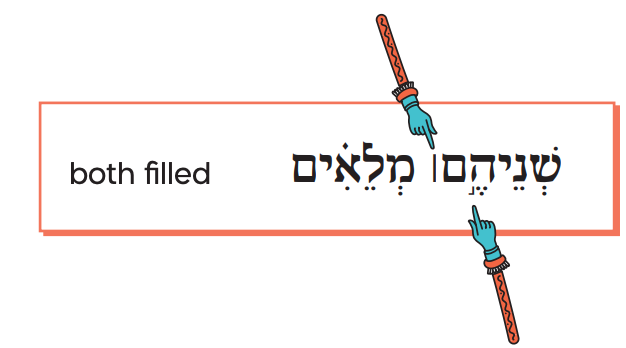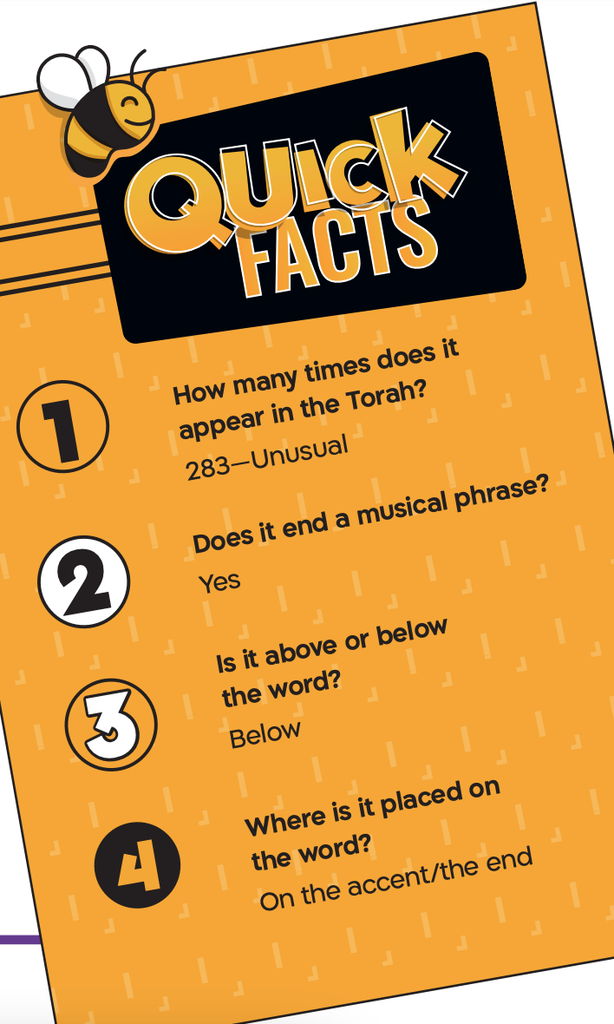Ilustration Credit: Elad Lifshitz, Dov Abramson Studio


מֻנַּח לְגַרְמֵהּ—Munah L’garmeih
When you first look at it, this note just looks like another munah! But actually, munah legarmeih is a munah followed by a dividing line after the word. Legarmeih means “by itself” because this note makes the munah its own sound, a bit separate from what comes after. This only happens a handful of times in each parashah. And it really changes the tune! Most people sing this as a quivering note that sounds very unique. You can find them scattered throughout the Torah, but our parashah has quite few. Usually, a munah legarmeih is followed by another munah and then a revi’i, like this:
אֵ֣ת ׀ שְׁתֵּ֣י הָעֲגָל֗וֹת
The two carts

But sometimes it is just followed directly by a revi’i, like in this phrase, which comes up 12(!) times in our parashah:
שְׁנֵיהֶ֣ם ׀ מְלֵאִ֗ים
both filled

Try to listen for this special note getting repeated over and over!

-------------------
-------------------





